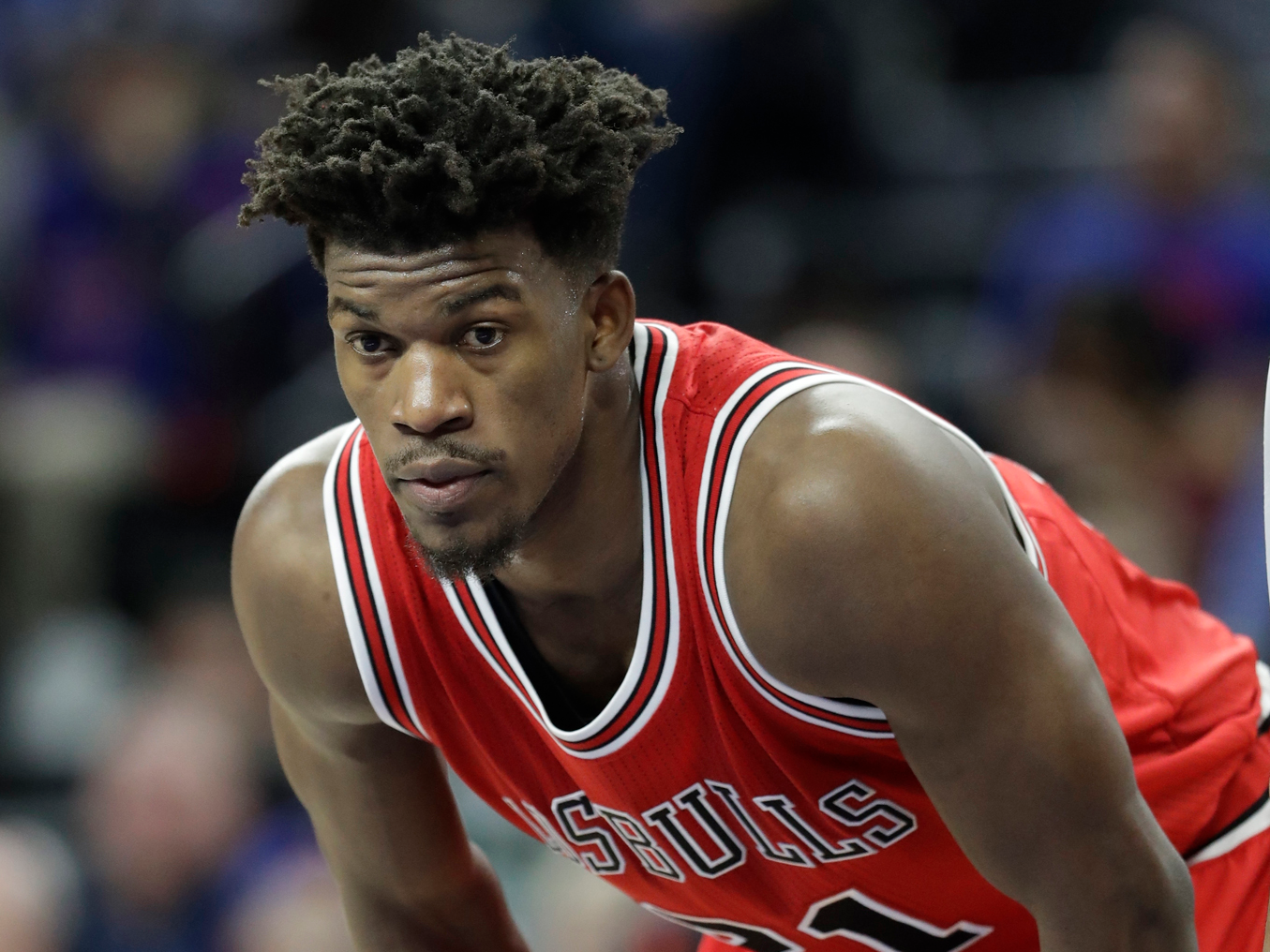The Minnesota Timberwolves landed Jimmy Butler from the Chicago Bulls in a big draft-night trade on Thursday.
While Butler may be happy about a change of scenery and reunion with former Bulls head coach Tom Thibodeau, the trade may have an immense impact on his future earnings.
Butler is under contract for two more seasons and has a $19.8 million player option for the 2019-20 season.
When Butler was with the Bulls, he had two seasons to either earn MVP, Defensive Player of the Year, or make an All-NBA team to earn the Designated Player Extension (DPE). The DPE is a new contract extension, added in the league’s new CBA, that allows teams to sign a player they drafted to a five-year contract worth 35% of the salary cap with 8% annual raises if they earn any of the aforementioned honors.
Had Butler earned the DPE with the Bulls, he could have signed a five-year deal worth approximately $246 million in 2019-20 under a projected $120 million salary cap, according to The Athletic’s Sean Highkin. By comparison, under the same projected salary cap, signing with another team, Butler could have earned approximately $155 million over four years.
However, the numbers may have changed slightly. The NBA's projected salary cap has actually fallen in recent days, with ESPN's Brian Windhorst reporting the cap is projected at $99 million in 2017-18, down from $101 million and $108 million as was initially projected when the league signed a new TV deal.
According to K.C. Johnson of the Chicago Tribune, Butler's DPE projection ranged from $217 million to $246 million over five years, depending on the salary cap. If we assume his DPE with the Bulls would have been $217 million, which comes to a projected salary cap of $106 million in 2019-20, he will still have lost out on a good a chunk of change.
By being traded to the Wolves, Butler is obviously no longer with the team that drafted him, eliminating his shot at the DPE. The Wolves now have Butler's Bird Rights, so if Butler opts out of his contract in 2019-20, he could sign a max contract with the Wolves worth 30% of the salary cap with 8% annual raises. Under a $106 million salary cap, Butler could sign a deal worth approximately $184 million over five years - a $33 million difference from the low-end projection of his DPE.
Butler has other options. He could opt into his 2019-20 option, then sign a "one-plus-one" deal with the Wolves in 2020 to become a free agent again the next season and sign a max contract worth 35% of the cap because he'll have played 10 or more years in the league.
However, if Butler wants to leave the Wolves in 2019, he only stands to lose more money. By leaving the Wolves, another team wouldn't have Butler's Bird Rights and could thus only sign him to a deal worth 30% of the cap, with 5% annual raises, over four years. Under a $106 million salary cap, that would come to approximately four years, $136 million.
Butler, like many star players, still plans to benefit immensely in free agency because of the increased salary cap. But the DPE is the ultimate contract, the so-called "super max" designed to help teams keep their star players. By getting traded, Butler can no longer get the super max.

